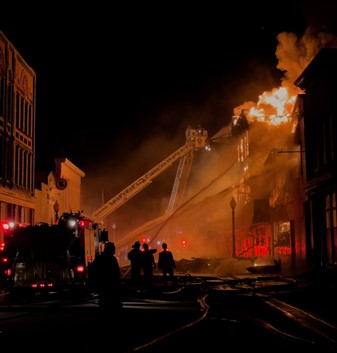Historic structures are invaluable cultural assets that connect us to the past and tell the story of our shared heritage. However, these buildings often face unique challenges when it comes to fire safety. Due to their age, construction methods, and historical significance, fireproofing and protecting these structures requires a delicate balance between preserving their integrity and ensuring modern safety standards. In this article, Devin Doyle of Newport Beach explore the complexities of fire safety in historic buildings and how modern techniques can be adapted to safeguard these architectural treasures.
The Challenges of Fire Safety in Historic Structures
Historic buildings often come with a unique set of challenges when it comes to fire safety. Here are some of the key issues that make fireproofing and protection more complex in these structures:
Outdated Construction Materials and Methods
Many historic structures were built using materials and techniques that do not meet modern fire safety standards. Wooden beams, outdated electrical wiring, and open staircases are common features that increase the risk of fire and rapid spread.
Preservation and Conservation Requirements
Preserving the architectural and historical integrity of these buildings is paramount. Fireproofing measures must be implemented in a way that doesn’t compromise their original design or materials. This often restricts the use of invasive or visually altering safety techniques.
Limited Access for Firefighting
Historic buildings are often located in older areas with narrow streets and limited access for firefighting equipment. This makes it difficult for emergency responders to quickly and effectively contain a fire.
Unique Building Layouts
Historic structures often have unconventional layouts, hidden passages, or intricate designs that make evacuation and firefighting more challenging. These factors require specialized fire safety planning and implementation.
Modern Fireproofing Techniques for Historic Structures
To address these challenges, modern techniques must be adapted to meet the specific needs of historic buildings. Here are some key strategies used to enhance fire safety while preserving the integrity of these structures:
Fire-Resistant Materials
One way to improve fire safety in historic structures is to use fire-resistant materials that blend with the original architecture. Intumescent paints and coatings can be applied to wooden beams and other flammable elements to provide additional fire resistance without altering the building’s appearance.
Fire Barriers and Compartmentalization
Creating fire barriers and compartmentalization is another effective technique for fire safety. Installing fire-resistant doors, walls, and ceilings can help contain a fire to a specific area, allowing more time for evacuation and reducing overall damage. These barriers can be designed to match the building’s original aesthetics, ensuring preservation goals are met.
Advanced Fire Detection Systems
Modern fire detection systems can be discreetly installed in historic buildings to provide early warning of fire. Wireless smoke detectors and heat sensors can be placed in strategic locations without extensive modifications to the structure. These systems can be integrated with central monitoring to ensure a rapid response in case of fire.

Fire Sprinkler Systems
While traditional fire sprinkler systems may not be suitable for historic structures, there are specialized systems designed for these environments. Concealed sprinklers and dry pipe systems can be used to minimize the impact on the building’s aesthetics. These systems activate only when needed, providing targeted fire suppression while reducing water damage.
Emergency Evacuation Planning
An effective fire safety plan is essential for historic buildings. This plan should include clear evacuation routes, designated assembly points, and regular fire drills. Due to the unique layouts of historic structures, it’s important to ensure all occupants are familiar with the evacuation procedures.
Conclusion
Fire safety in historic structures requires a careful balance between preservation and modern safety standards. By implementing modern fireproofing techniques that are sensitive to the unique characteristics of these buildings, we can protect our architectural heritage while ensuring the safety of occupants and visitors. Fire-resistant materials, fire barriers, advanced detection systems, and specialized sprinkler systems all play a role in safeguarding these invaluable cultural assets.
As we continue to value and preserve our historic structures, it’s essential to remember that fire safety is an ongoing effort. Regular assessments, maintenance, and updates to fire safety plans are crucial to ensure these architectural treasures are protected for generations to come. With a thoughtful approach, we can honor our past while creating a safer future.
